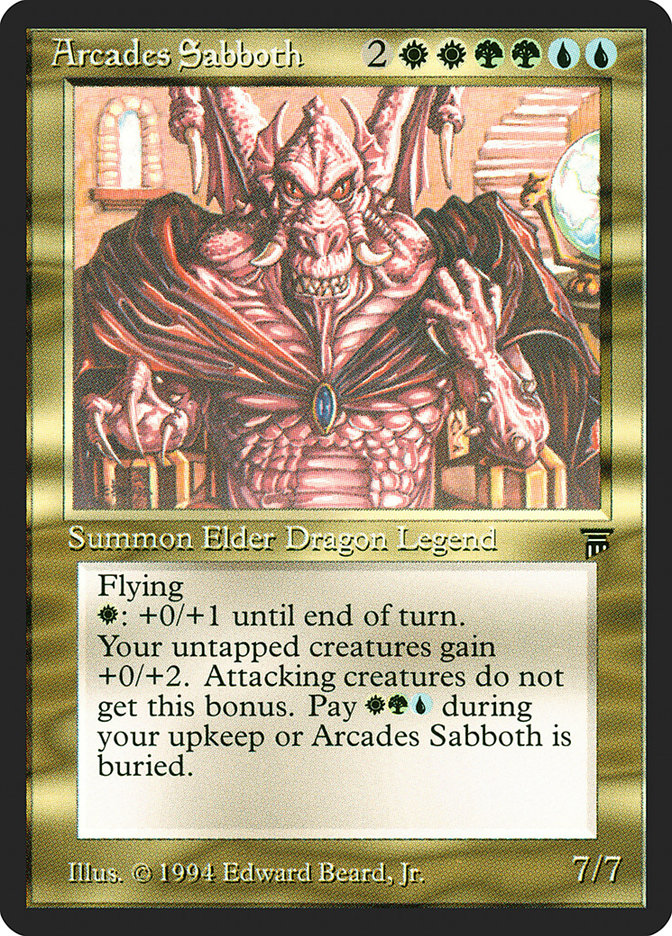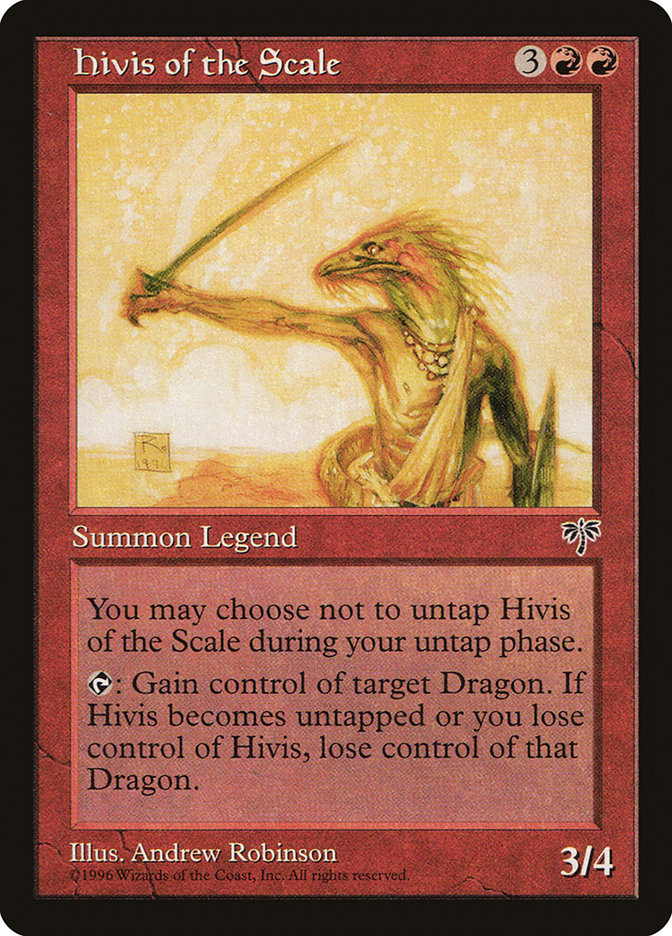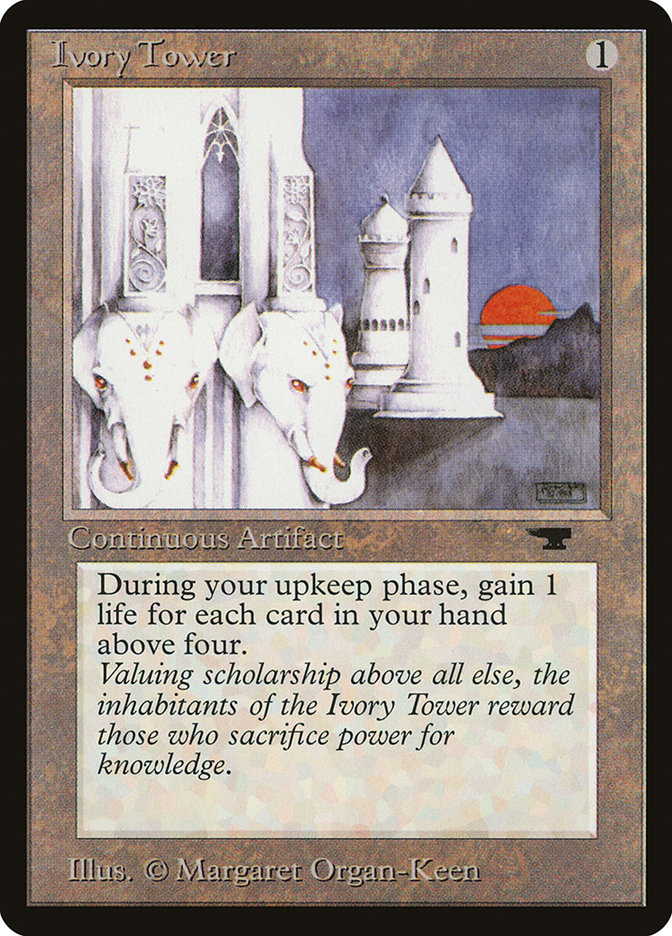2020 is going to be a thoroughly exciting year for Commander. Normally, it’s always going to be an exciting year, but with last week’s announcements of what the year will hold, it looks like it’s going to be the best year yet. From the decks of Ikoria: Lair of Behemoths and Zendikar Rising to the special Commander Collection: Green to Commander Legends which also includes decks of its own, there’s going to be something for everyone who loves the 100-card format. The day of the announcement, my pulse pounded for several hours—not because of the announcement itself, which I (mostly) knew was coming, but because of everyone’s reactions in the social mediascape. Seems like I wasn’t the only one who thought that the next year is going to be bonkers.
It made me realize that there are plenty of Commander players who don’t know all the details of their format’s pedigree. Some of them weren’t old enough when it was born to be aware of it. Hell, a few of them weren’t even born themselves. It’s my intention to offer up a brief history of the format and posit on how we became the most popular way in history for Magic players to enjoy themselves. What follows isn’t a timeline so much as a memory of impressions and impactful moments. Many of the details are lost because they didn’t seem significant at the time.
We didn’t know we were building what Commander would become. We were creating something that we wanted because there wasn’t anything like it and we thought it could fill the void. From nearly the get-go, it was intended as the rest and relief from tournament Magic. Even when we saw the initial growth spurt, we just figured it was the novelty. We suspected that we’d always be the little format that could and that was just fine with us. It doesn’t hurt to have been wrong about that.
The Beginning
It all started in the apartment of my friend David Phifer in Anchorage, Alaska in 2002, when I was stationed at Elmendorf Air Force Base. We were a group of nerds that got together at David’s place, which he called “The Place to Be,” on Mondays to do nerd stuff—play Magic, play board games, watch movies, play the PS2 (Hot Shots Golf was a favorite). It was an excellent group of folks. I was a well-established Level 3 Judge by that time, having Head Judged multiple Grands Prix, and had been writing for this very site for more than a year and a half on the first popular “Ask the Judge” column. I was also a Premier Tournament Organizer (albeit in a tiny environment). David was on his way to L3, Ariel (to whom he’s now married) was an L1 or L2, and we played FNM at the coffee/sandwich shop owned by one of our members, Aren Martin.
One Monday, they were playing a five-player game of Magic when I arrived. They told me they were playing a variant called Elder Dragon Highlander, which one of the other folks, Adam Staley, had come up with. It’s worth noting that Adam may have liberally cribbed some ideas from a list of variants in an old (like single-digit version number) of Duelist magazine. It’s hardly the point. They explained to me the rather limited set of rules.
It looked interesting, but there was Hot Shots Golf to play or something. The second time I saw them playing made me take notice, because they were having a grand old time. I inquired a little more deeply, watched the gameplay, took some mental notes, and asked some questions. At that point, it was true Highlander, to include basic lands. Being this was a time when there weren’t that many nonbasic lands, there was a group agreement (the forerunner of Rule 0, I suppose) to not play any kind of nonbasic land hate. There were five people, and each of them “claimed” one of the Elder Dragons. There wasn’t any more room in the group. We talked about expanding it to more of our Magic-playing friends.
We laid the groundwork for playing in a league structure. People claimed other legendary creatures as their Generals, and we made a list. At that time, you couldn’t have someone else’s General in your deck. Unfortunately, like many gaming plans, it never game to fruition after the blueprint stage, and we never actually played before I went to Langley Air Force Base in Virginia in 2003 for my last tour before retiring in 2004.
Enter my first real EDH group, Justin Norris, Todd Hughson, Chuck Weaver (whom I got some pictures with this past Gen Con), and Brian Ponzar. Justin had contacted me before I left Alaska and told me about their group, which lived near where I would end up when I got to Virginia. I met them and their extended group, played games, drafted, and did all the things we nerds did before we became the coolest people around (and are still doing to this day). They were a super-casual group with small Magic collections. One day I told them about this format that I had brought with me. They were intrigued.
I made some changes, to include getting rid of the singleton nature of basic lands. I knew for a fact the format would never have legs otherwise. I banned a few cards, and then we picked Generals. I think we picked OG Elder Dragons, but I wouldn’t swear to it in court. The reason I think we did is that I was running Arcades Sabboth because they had smaller collections than I did and he was the worst.
By the time Gretchyn and I had met and moved in together in early 2004, EDH was all they wanted to play on our now normal Sunday game afternoon. I knew we were onto something. I wrote an article about it here and even ran a contest. I think I remember 34 submissions, 31 of them being basically the same deck. The winner featured Hivis of the Scale, a clever piece of metagaming.
With reinforcement that there was a wider audience for the format, I took it to the only bigger group of Magic people I knew outside the local area—the judges at the Pro Tour. It was a match lit to dry tinder.
The Spread
The next crucial moment came at an ensuing Pro Tour; in my cloudy memory, it was PT Atlanta 2005, my first as a Head Judge. Already close friend and future RC member Scott Larabee, the Pro Tour Manager, found me after a day’s rounds had ended to go grab a bite. I was just about to sit down to for a game, so I handed him my Lord of Tresserhorn deck. He was enamored with the format from the get-go. He took it back to the Wizards of the Coast offices, where it immediately infected Aaron Forsythe and others. We were off to the races.
In 2006, Level 3 Judge and Canadian Regional Coordinator Gavin Duggan, who was a rabid fan, suggested we formalized things. The two of us and fellow L3 Judge Duncan McGregor formed the Rules Committee and Gavin stood up a website (that’s been basically the same since, a problem we’ll be rectifying very soon; our target date to have it running is the first of the year). We did banning announcements on a somewhat regular schedule, but we didn’t have the kind of overhead view that we developed in the ensuing years. We eventually added Scott and Toby Elliott to the RC after Duncan dropped out, and we added both Kevin Desprez and later Devon Rule for periods of time until their other commitments led to them moving on.
We also hadn’t really articulated our philosophy yet, but we were very much on the idea of being something different, come what may. We’ve taken some heat over the years for letting the format be exactly what it wants to be on its own terms, but that was our commitment from the beginning. If I were to have some regrets about things, it wouldn’t be that we stuck to our guns, but how I articulated our position, sometimes alienating folks when I should have been educating.
Becoming Commander
We moved along kind of blissfully until sometime in 2010 when Scott told me that the company was going to make product for the format but because of other intellectual property, the format needed a name change. I was on board. It was obviously a bellwether moment and has eventually led to where the format is, not to mention where I’m currently sitting and making cards for future sets.
There have been moments in the intervening years that have nudged us to where we are, but they’re the kind that you tend to see in hindsight. The success of content producers such as Tolarian Community College and the Command Zone were heralds of what was to come. For me, the real signal of the format’s arrival was when magiccards.info, the forerunner of Scryfall, included a color identity (the brain child of former Magic Rules Manager Matt Tabak) section to the search. The success of cards and decks made specifically for us cemented the deal. We knew we were going to be a small force in the future of Magic. The repeated success of those products and the reports of the raw numbers of Commander players around the globe kicked us up to a large one. It’s obviously led to things like the Command Zone at MagicFests and SCG CON and CommandFest.
The next big move for me was to form the Commander Advisory Group (CAG) a year ago. One of the criticisms of the RC was that we seemed distant, ivory tower-ish, and monolithic. It was fair commentary. We were also the opposite of diverse, four 40+ (three of us actually 50+) privileged straight white dudes. Even as open-minded as we all are, we were struggling to get all the perspectives we needed.
There were two major elements of the folks we selected for the CAG: broad reach and diversity. We wanted people from across as much as the social and Magic play style spectrum as we could put into a manageable group. We also wanted people who understood what we’re trying to accomplish with Commander and for whom that vision resonates. We found them (as a refresher, Charlotte Sable, Rachel Agnes, Josh Lee Kwai, Ron Foster, Adam Styborski, and Shivam Bhatt) and they’ve exceeded our expectations in the quality of their input and advice. Recently adding a seventh, the inimitable Olivia Gobert-Hicks, means that we’ve help up the CAG’s game that much more. Forming the CAG was an important step in assuring the format’s future. The RC isn’t getting any younger, and grooming our eventual successors, whether that’s via the CAG or other methods (not that we plan on going anywhere soon), is part of our bigger-picture responsibility.
From where I’m sitting, a major part of what got us here was developing a vision and understanding what we wanted to do—and then sticking to the vision. It’s never been a commentary about other styles of play of Magic (or even styles within Commander itself). It’s been that there’s nothing like Commander and that’s the way we intend to keep it. Even if some folks enjoy the format differently (which we support), we’re not changing the vision. Commander is intended to be a refuge from competitive Magic, that’s how our core demographic enjoys it, and that’s how the RC is committed to keeping it.
Welcome to the Future
My current position prevents me from saying anything about the future of Commander from this perspective. I can tell you that the RC has several initiatives planned, which includes the aforementioned website upgrade. Most importantly, it includes encouraging and supporting a chorus of disparate voices who might like to be content creators. Content creation, whether that’s text, video, or whatever, is part of what gives texture to our community. The CAG is full of well-known Commander personalities. Now it’s time to foster the next generation—not to necessarily serve on the CAG/RC, but simply to provide layers and depth to our Commander chorus.
I sent out a call on social media a few weeks back and received some good responses, so I’ll repeat the call here. If you’ve always wanted to be a Commander content creator but have faced social barriers in doing so, contact me (email is best: myfirstDOTlastATgmail). I’ll see if I can help. Be prepared to offer a vision of the type of content you’d like to create, why it’s important, and what would distinguish your voice or what you make different from the things which are already out there, and most importantly, the social barriers you’ve faced that have prevented you from starting or stopped your early progress.
The history of Commander has been a long, strange, and unexpected trip. How we got here is a compelling story, but it’s more important to focus on where we are and where we’re going. From where I sit, the sky is the limit.
Sheldon Menery Deck Database
Check out our comprehensive Deck List Database! Click each section for lists of all my decks.
Signature Decks
These are the decks that define my personal play style to the greatest degree and to some extent lay the original foundation of the format. They’re also the ones you’re most likely to see me bringing along to spell-sling at an event.
The Chromatic Project
The Chromatic Project started as an effort to build at least one deck of all 27 possible color combinations, which was expanded to 32 when we finally got four color commanders. There’s more than one of some combinations, mostly because I have a Temur problem, plus some partner combinations are too enticing to pass up.
Mono-Color
Guilds
Shards and Wedges
Four Color
Five-Color
Partners
The Do-Over Project
The Do-Over Project is the next step after the Chromatic—building a deck with each of the same Commanders, but not repeating any cards save for basic lands (props to Abe Sargent “Next 99” idea). The Do-Over Project is still ongoing because we keep getting saucy new sets with creative and colorful commanders to build new decks with.
If you’d like to follow the adventures of my Monday Night RPG group (in a campaign that’s been alive since 1987) which is just beginning the saga The Lost Cities of Nevinor, ask for an invitation to the Facebook group “Sheldon Menery Monday Night Gamers.”




